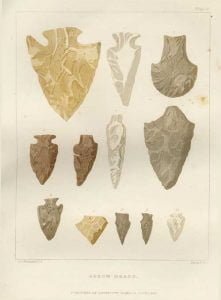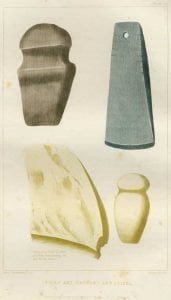Mace or War Club
There is no instance, it is believed, among the North American Indians, in which the war-club employed by them is made of a straight piece, or has not a recurved head. Generally, this implement consists of a shaft of heavy wood, such as the rock maple, with a ball carved at one side of the head, much in the manner of the South Sea Islander, or Polynesian war-clubs. Such is the Pug-ga-ma-gun of the Algonquins. It differs from the Polynesian club, chiefly in its possessing a tabular shaft, and in its less elaborate style of carving. Clubs exhibited at the … Read more



